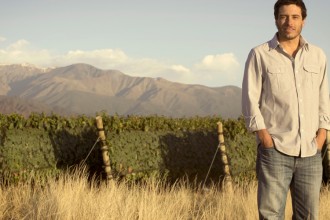Some would say getting into Harvard is competitive. Winemakers from Abruzzo think Harvard hopefuls have no idea what competitive is. That’s because they’re trying to navigate the choppy waters of being taken seriously as an Italian wine in an already crowded market.
Just east of Rome, the rugged Abruzzo region lies almost unchanged by the tides of time and globalization, clinging to a land of cobbled streets and folklore, sun-drenched palazzos with nary a franchise or logo to be seen. The Appenines are grand and soaring, the valleys and crags still prowled by boars and bears. Abruzzo, is one of the last strongholds of old Italy, and even if it’s ignored change, oenophiles should not ignore it.
Abruzzo is nearly synonymous with Montepulciano, its lead grape varietal (not related to the Vino Nobile de Montepulciano, a Sangiovese-based wine from Tuscany). While Montepulciano can be a compelling, complex red and is the second-most planted grape in Italy, it’s been shipped away from its native soil to become mixed with other Italian reds in not-so-prestigious bottles (think: the cheap one you pick up for a pizza night in). It does Abruzzo no favors that its other main production, Trebbiano, is frequently mistaken for its limp Tuscan cousin when Trebbiano d’Abruzzo boasts versatility and ageability with citrusy, accessible notes.
These preconceptions have made Abruzzo and its wine relative underdogs when they’re more than capable of giving established varietals a run for their money. Case in point: in 2012, a bottle of Abruzzo’s Trebbiano won the top 50 Italian wine award.
What damaged Montepulciano’s reputation abroad is probably what makes it so special in the first place. It’s seen as a workhouse when it’s really a jack-of-all-trades – age it in stainless steel for a fresh, fruity wine that doesn’t need to spend a few years in a bottle for a greater depth. If aged in casks or barriques, the wine will gain an appealing complexity, though it will be better suited to winter nights than everyday drinking. Some producers have taken to aging it for over four years in oak, resulting in a wine that’s inky, chocolate-infused and has a higher price tag.
In the newly created DOC of Cerasuolo d’Abruzzo, Montepulciano grapes are crafted into Cerasuolo rosés using a unique winemaking technique. Time between the fermenting juice and the red grape skins is reduced, creating a lighter, brighter must that gives Cerasuolo (cherry in Italian) its name. Don’t confuse it with the Cerasuolo di Vittoria, made using the same techniques but with the Frappato grape.
Montepulciano’s popularity in Abruzzo hasn’t edged out opportunities for other grapes to take root. Ancient varietals have been rediscovered: high-acid Pecorino, which favors high elevations, has fresh, herbal notes and a sharp bite. Passerina and Montonico were turned into sparkling wine in their past lives, but have now found a calling as dry table wines.
Any places boasting that much variety is inherently varied itself and amongst its 33,000 hectares, the region is divided into numerous sub-areas, meaning you shouldn’t indiscriminately grab a bottle. Co-ops dominate about 80% of them, mostly concentrated in hotter areas. The resulting range appeals to those of different tastes and wallet sizes: higher-quality top-tier bottles can be found in Tollo and Citra, while the rest are more affordable and easier for more casual drinking. That being said, the diversity means you need to do your research when choosing a producer. Established names are Masciarelli, La Valentina, and Zaccagnin. If you’re willing to indulge, Valentini is a strong bet for Trebbiano.
Ready to start drinking? Montepulciano plays extremely well with others (and we’d recommend starting with the Niro, Montepulciano d’Abruzzo). Though what you get will largely depend on the producer, a standard bottle is a great addition to a rich, savory meat dish, winter vegetables, or cheesy comfort foods. It’ll taste almost as good as when drunk in Abruzzo’s cobbled lanes, with mountains overhanging a city that could be torn from a fairy tale with wine that tastes good enough to believe you’re in one.









Well put!
Great article Kim. Thank you.
Great article. My parents were from Abruzzo but I have never been there. Close once. Started snowing in the Appenines and had to turn back to Umbria. Thanks for letting me see my ancestors home.
RAY